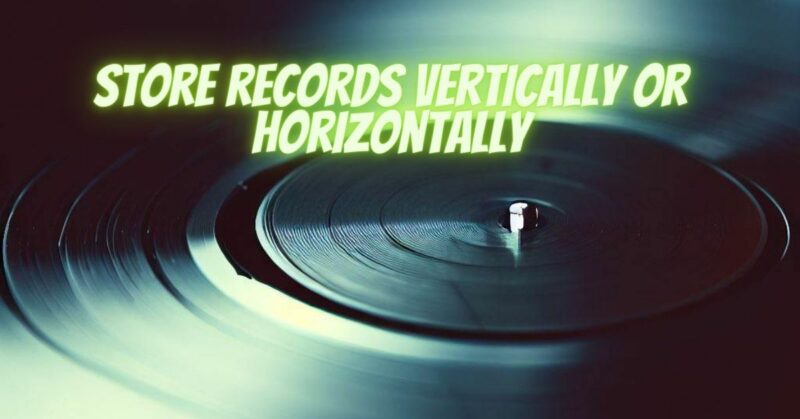Vinyl records, with their rich analog sound and artistic album covers, have been making a comeback in recent years. As collectors and enthusiasts rediscover the joy of vinyl, one question frequently arises: should vinyl records be stored vertically or horizontally? In this article, we will explore the advantages and disadvantages of each storage method to help you make an informed decision for your precious vinyl collection.
Vertical Storage
- Advantages:
- Prevents Warping: Storing records vertically minimizes the risk of warping. When records are placed horizontally, the weight of the stack can cause the lower records to warp over time.
- Easy to Flip Through: Vertical storage allows for easy browsing and selection of records. You can quickly flip through your collection to find the one you want to play.
- Reduced Dust Accumulation: Records stored vertically are less prone to dust settling on the playing surface, as they are not in direct contact with each other.
- Disadvantages:
- Space-Intensive: Vertical storage can require more space than horizontal storage, especially if you have a large vinyl collection.
- Spine Wear: Frequent sliding in and out of records can lead to wear along the spine of album covers over time.
Horizontal Storage
- Advantages:
- Space-Efficient: Storing records horizontally is space-efficient and allows you to maximize your storage area, making it ideal for those with limited space.
- Reduced Cover Wear: Records are less likely to experience cover wear, as they are not constantly sliding in and out.
- Disadvantages:
- Risk of Warping: Records stored horizontally can be subjected to uneven pressure, increasing the risk of warping, especially if the stack becomes too heavy.
- Inconvenient Access: Finding and retrieving a specific record can be less convenient than with vertical storage. You may need to sift through a stack to access the desired record.
The Ideal Compromise
While both storage methods have their merits and drawbacks, there is a compromise that can offer the best of both worlds:
- Use Vertical Storage with Dividers: Store your records vertically, but use dividers or bookends to keep them neatly organized and prevent excessive stacking. This method combines the space-efficiency of horizontal storage with the warp-preventing benefits of vertical storage.
- Regularly Rotate Records: To minimize the risk of warping, consider periodically rotating the records you store horizontally.
Ultimately, whether you choose vertical or horizontal storage for your vinyl records depends on your collection size, available space, and personal preferences. Each method has its advantages, and the ideal solution may involve a combination of both, ensuring that your vinyl records remain in excellent condition and readily accessible for your listening pleasure. Regardless of your choice, proper sleeve protection and a controlled storage environment are essential for maintaining the longevity and audio quality of your vinyl collection.


